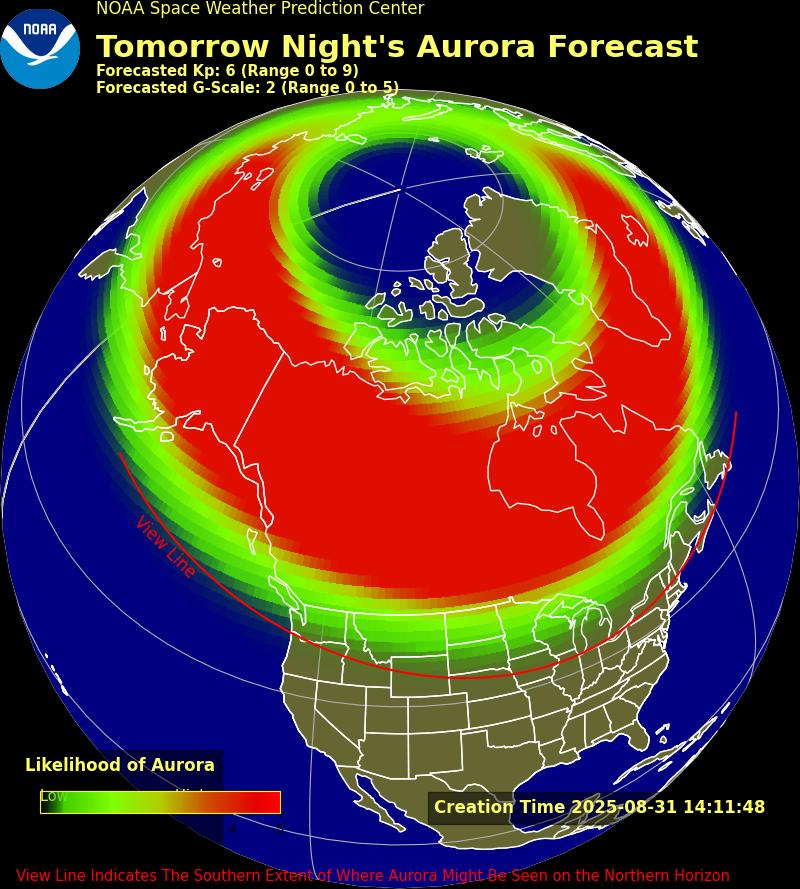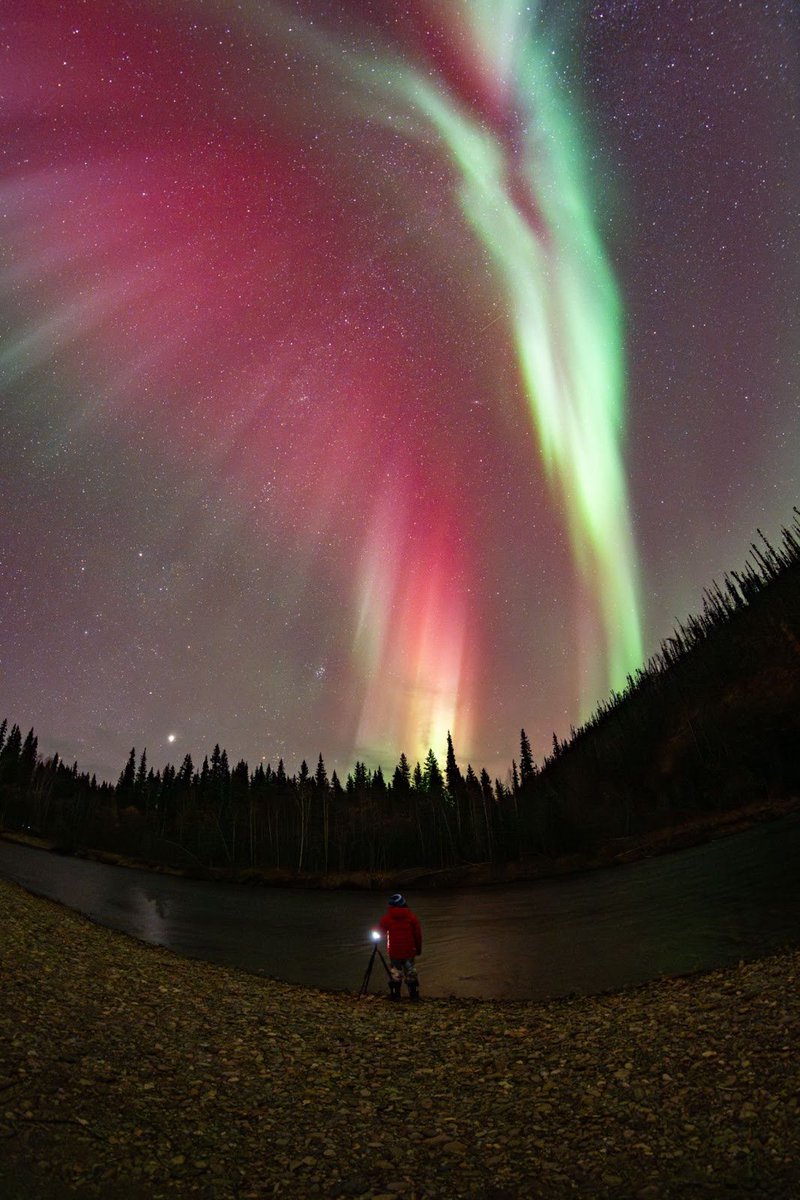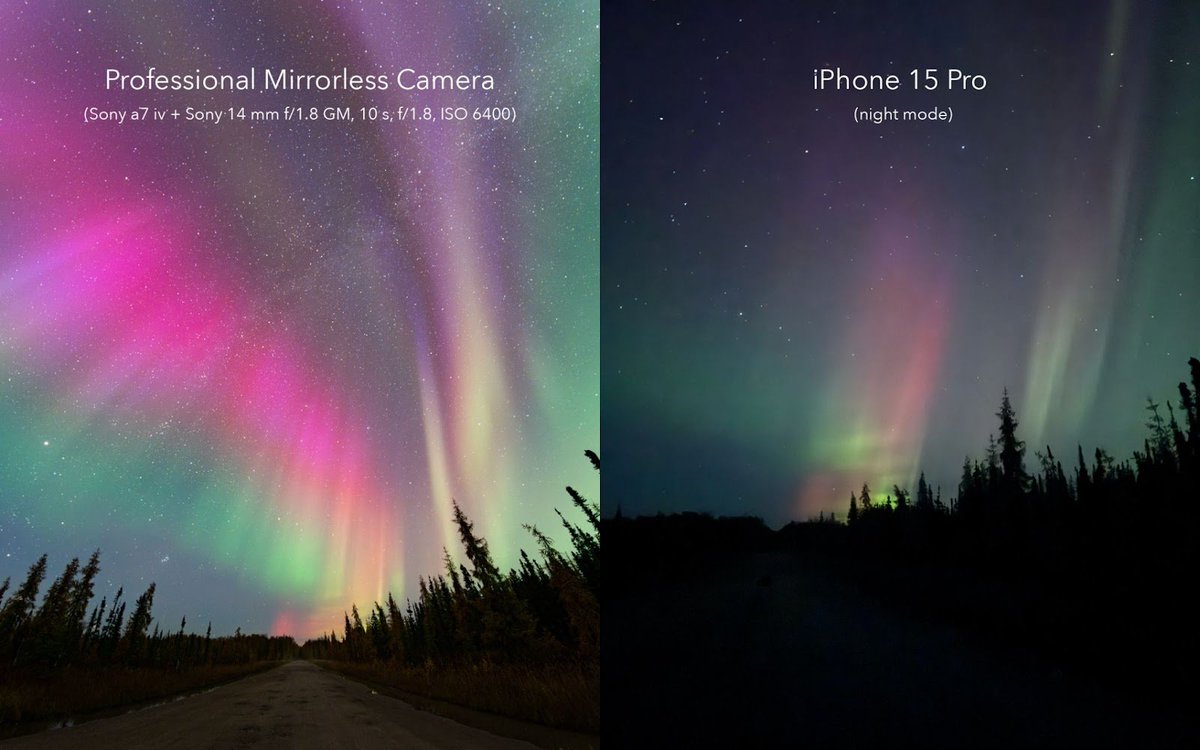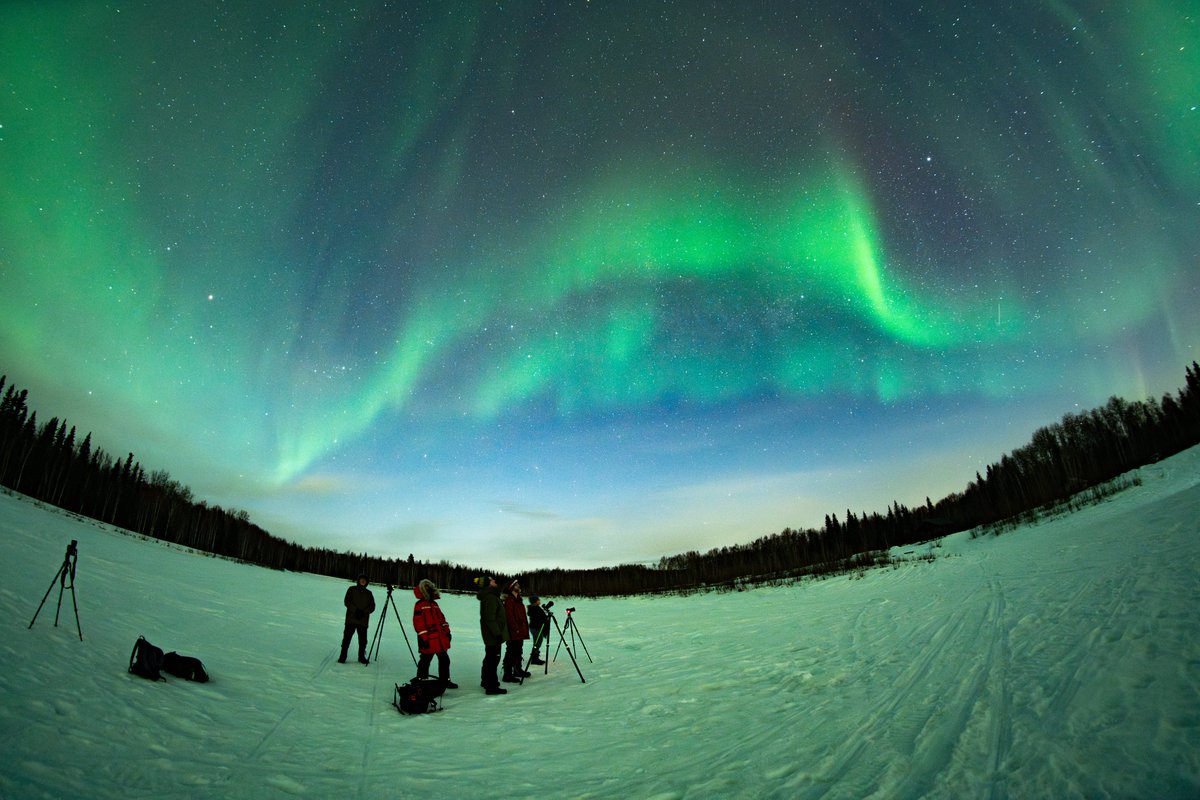
“The Aurora Guy” 📸 Northern lights photographer in Alaska!🔭Space Physics PhD student☀️💨 Tweets/views own!
2 subscribers
How to get URL link on X (Twitter) App




 Before we begin, a quick plug for my e-mail list where I sent out all this information earlier. I put a lot of work into crafting these alert messages, and they explain everything at a beginner level. You can sign up here to get these emails: go.theauroraguy.com/alerts
Before we begin, a quick plug for my e-mail list where I sent out all this information earlier. I put a lot of work into crafting these alert messages, and they explain everything at a beginner level. You can sign up here to get these emails: go.theauroraguy.com/alerts

 Before I go into specific models, let's talk about why you may or may not need to upgrade.
Before I go into specific models, let's talk about why you may or may not need to upgrade.

 Right now, there are some sunspot groups on the Sun facing the Earth. Specifically, AR (active region) 4100 and 4099 are directly facing Earth and magnetically complex, harboring potential for solar flares and CME eruptions...
Right now, there are some sunspot groups on the Sun facing the Earth. Specifically, AR (active region) 4100 and 4099 are directly facing Earth and magnetically complex, harboring potential for solar flares and CME eruptions... 

 First off, if you want to get these kind of threads emailed to you, you can sign up for my e-mail list: .
First off, if you want to get these kind of threads emailed to you, you can sign up for my e-mail list: . 
 Here's a screenshot from my e-book "A Beginner's Guide to Aurora Chasing" which can be found for free using this link: .
Here's a screenshot from my e-book "A Beginner's Guide to Aurora Chasing" which can be found for free using this link: .



 If you downloaded my beginner's guide e-book on aurora chasing, you would already know the necessary info on coronal holes. Check out these screenshots detailing coronal holes and their effects on Earth and auroras. Get my e-book for free using this link: bit.ly/free-aurora-e-…
If you downloaded my beginner's guide e-book on aurora chasing, you would already know the necessary info on coronal holes. Check out these screenshots detailing coronal holes and their effects on Earth and auroras. Get my e-book for free using this link: bit.ly/free-aurora-e-…






 NASA model: Impact evening hours UTC on Dec 31. Kp 6-8 predicted.
NASA model: Impact evening hours UTC on Dec 31. Kp 6-8 predicted.
 Here is the official bulletin from @NWSSWPC who are predicting a G3/Kp 7 geomagnetic storm as a result of a coronal mass ejection, or CME. Since these bulletins are hard to read if you are not accustomed to the space weather lingo, let me break things down for you...
Here is the official bulletin from @NWSSWPC who are predicting a G3/Kp 7 geomagnetic storm as a result of a coronal mass ejection, or CME. Since these bulletins are hard to read if you are not accustomed to the space weather lingo, let me break things down for you... 

 While there is space weather activity every day, and things change on the order of minutes, hours, and days, the Sun controls the climate in space and operates on an 11-year activity cycle called the solar cycle.
While there is space weather activity every day, and things change on the order of minutes, hours, and days, the Sun controls the climate in space and operates on an 11-year activity cycle called the solar cycle. 
 This will be a long thread. A synposis will be sent to my email list via an aurora alert summarizing all the activity going on. You will also get my 60+ page aurora chasing e-book for free which is the highest-rated aurora e-book online. Sign up: bit.ly/free-aurora-e-…
This will be a long thread. A synposis will be sent to my email list via an aurora alert summarizing all the activity going on. You will also get my 60+ page aurora chasing e-book for free which is the highest-rated aurora e-book online. Sign up: bit.ly/free-aurora-e-…


 First, the CME needs to hit... current forecasts from major space weather centers are saying the CME will hit tomorrow (Monday) around midday UT, but really, these models have errror bars. This means the CME could hit in the morning UT or the evening UT. UT is universal time and is the standard time zone for all official/scientific forecasts and discussion. To switch between UT and something like CDT (central daylight time), use a time zone converter. This is my favorite one:
First, the CME needs to hit... current forecasts from major space weather centers are saying the CME will hit tomorrow (Monday) around midday UT, but really, these models have errror bars. This means the CME could hit in the morning UT or the evening UT. UT is universal time and is the standard time zone for all official/scientific forecasts and discussion. To switch between UT and something like CDT (central daylight time), use a time zone converter. This is my favorite one: 

 What happened?!
What happened?!
 I wrote a blog on the topic which you can read here: but thought that writing things out in a big thead would be great in case people want to share or just enjoy content on X over an external site :)theauroraguy.com/blogs/blog/wha…
I wrote a blog on the topic which you can read here: but thought that writing things out in a big thead would be great in case people want to share or just enjoy content on X over an external site :)theauroraguy.com/blogs/blog/wha…